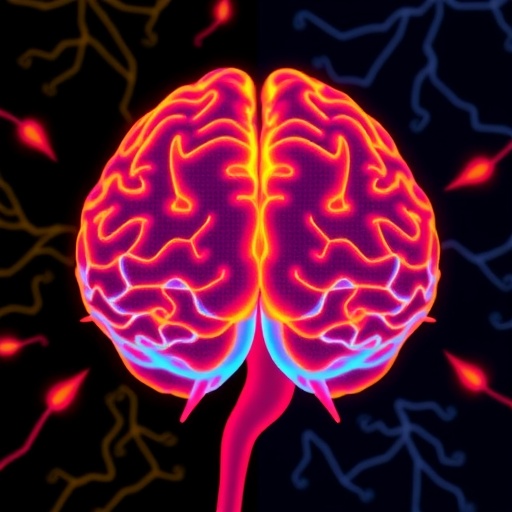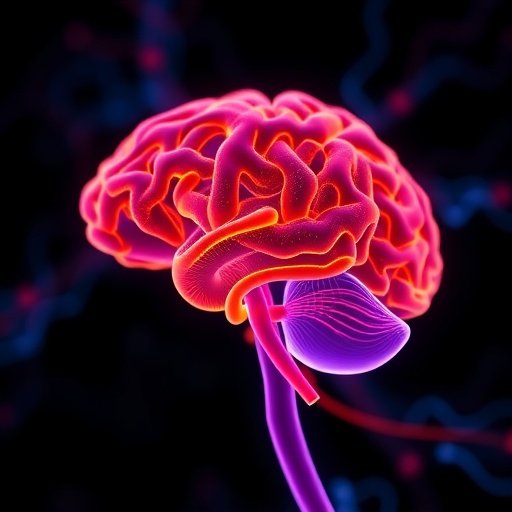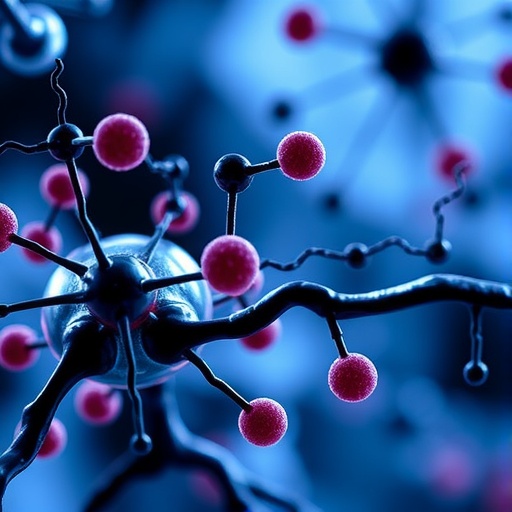
In the intricate landscape of human memory, the amygdala and hippocampus play pivotal roles in how we encode and retrieve our experiences, particularly those charged with emotional significance. A groundbreaking study published in Nature Neuroscience has illuminated a nuanced mechanism by which noradrenergic activation of the basolateral amygdala (BLA) enhances the specificity of memory for highly similar events occurring in close temporal proximity. This discovery not only advances our understanding of emotional memory consolidation but also unveils a sophisticated neural interplay involving microRNA regulation within the hippocampal dentate gyrus, which refines how distinct memories are formed and maintained.
Memory is not merely about preserving information but also about distinguishing between stored experiences that often share overlapping features. Emotional events, especially those eliciting strong arousal, tend to be remembered with greater intensity and longevity, largely due to the modulatory influence of the BLA. Yet, when multiple emotionally charged events bear similarity and happen within a short timeframe, the brain faces the challenge of preventing confusion, thus avoiding the erroneous strengthening of incorrect associations. The recent study addresses this conundrum by identifying a molecular pathway that fosters precise, discrete encoding of such similar events, thereby enhancing memory specificity without compromising overall memory strength.
Central to this process is the neurotransmitter norepinephrine, which activates the BLA during emotionally arousing experiences. Activation of noradrenergic receptors in the BLA triggers downstream effects that facilitate memory consolidation. However, the study reveals that when multiple similar events occur closely together, the BLA’s influence extends beyond mere enhancement of memory strength—it recruits a specific microRNA, miR-134, within the hippocampal dentate gyrus to orchestrate a refined consolidation process. This microRNA acts as a fine-tuner, regulating synaptic plasticity mechanisms that help differentiate between overlapping memory representations.
.adsslot_j7OmDV8nL9{width:728px !important;height:90px !important;}
@media(max-width:1199px){ .adsslot_j7OmDV8nL9{width:468px !important;height:60px !important;}
}
@media(max-width:767px){ .adsslot_j7OmDV8nL9{width:320px !important;height:50px !important;}
}
ADVERTISEMENT
Experimental evidence from rodent models demonstrated that targeted downregulation of miR-134 in the hippocampus alone was sufficient to produce highly specific memories for similar events, even when their temporal proximity would normally blur their distinctions. Remarkably, this modulation of miR-134 did not affect the intensity or strength of the memory traces, highlighting that memory specificity and memory strength can be dissociated at a molecular and circuit level. Such findings present miR-134 as a pivotal molecular switch driving the fidelity of memory encoding during complex and emotionally charged experiences.
Further dissection of the phenomenon showed that noradrenergic activation of the BLA did not invoke this miR-134–mediated pathway when a single distinct event was learned, implying an ‘on-demand’ recruitment of this hippocampal mechanism. This selectivity suggests that the brain dynamically engages different neural strategies depending on the context and demands placed upon memory systems, optimizing cognitive resources while minimizing potential errors in memory retrieval.
The hippocampal dentate gyrus has long been implicated in pattern separation, a process critical for distinguishing highly similar input patterns into separate representations. This study adds a novel molecular layer by implicating miR-134 in this function, linking noradrenergic signaling to microRNA regulation and synaptic consolidation fidelity. Such integration underscores the multifaceted approach evolved by neural circuits to maintain a balance between memory generalization and specificity.
From a translational perspective, understanding how the noradrenergic system and microRNA interactions sculpt memory precision opens new avenues for addressing memory-related disorders. Conditions characterized by overgeneralization of fear memories, such as post-traumatic stress disorder (PTSD), could potentially benefit from therapies targeting these molecular pathways to promote more discriminating memory recall and diminish pathological anxiety responses.
Moreover, these findings deepen our grasp of how emotional memory modulation involves both the amygdala and hippocampus but through different and context-dependent mechanisms. The BLA exerts modulatory effects on memory strength generally, but when confronted with the challenge of encoding multiple similar emotional events, it recruits the hippocampus to ensure the memories remain distinct and less confusable. This duality advances the field’s conceptual framework on emotional memory processing and the neurobiological basis of memory specificity.
Notably, the study employed precise molecular techniques enabling localized manipulation of miR-134 expression within the hippocampus, underscoring the importance of spatial and temporal specificity in neural circuit investigations. Such methodologies pave the way for future studies aimed at dissecting the roles of various microRNAs and epigenetic factors in memory and cognitive functions more broadly.
An additional layer of interest arises from the study’s demonstration that enhancing memory specificity does not compromise memory strength, refuting simplistic models that assume a trade-off between the two. Instead, it posits a more nuanced regulatory system where emotional arousal and molecular control converge to optimize both the quality and durability of memory representations.
The implications of these results extend to understanding how the brain navigates the complexity of daily life, where numerous similar events often occur in close temporal windows. The ability to keep these experiences discrete and accurate is crucial to adaptive behavior, allowing organisms to respond appropriately to future encounters based on precise past learning.
In sum, this research elucidates a sophisticated, context-sensitive neural mechanism by which the amygdala and hippocampus interact under the influence of noradrenergic signaling and miRNA regulation to ensure memory specificity. It highlights the dynamic and intricate molecular choreography that underpins how emotionally salient yet similar events are stored and recalled, refining our fundamental comprehension of memory function.
As we continue to unravel the molecular substrates of memory, the role of small regulatory RNAs like miR-134 emerges as a promising frontier, bridging neurochemical signals and synaptic plasticity with behavioral outcomes. These discoveries forge stronger links between cellular mechanisms and cognitive phenomena, leveraging molecular neuroscience to decode the complexities of human memory.
Future research building on these insights may not only continue to illuminate the biology of memory but also inspire novel interventions tailored to enhance memory precision and resilience in psychiatric and neurodegenerative disorders. The paradigm of noradrenergic-BLA modulation coupled with hippocampal microRNA control is poised to become a cornerstone in the quest to manipulate memory circuits therapeutically while preserving the nuanced relations between emotional arousal and memory accuracy.
Subject of Research: Noradrenergic modulation of basolateral amygdala and hippocampal microRNA regulation in memory specificity for similar emotional events.
Article Title: Noradrenergic activation of the basolateral amygdala facilitates memory specificity for similar events experienced close in time.
Article References:
Atucha, E., Pais, M., Ronzoni, G. et al. Noradrenergic activation of the basolateral amygdala facilitates memory specificity for similar events experienced close in time.
Nat Neurosci (2025). https://doi.org/10.1038/s41593-025-02014-0
Image Credits: AI Generated
Tags: amygdala memory precisionbasolateral amygdala activationdistinguishing similar memoriesemotional event encodingemotional memory consolidationhippocampal microRNA regulationmemory formation and maintenancememory specificity enhancementneural mechanisms of memorynoradrenaline effects on memoryoverlapping memory featurestemporal proximity in memory





